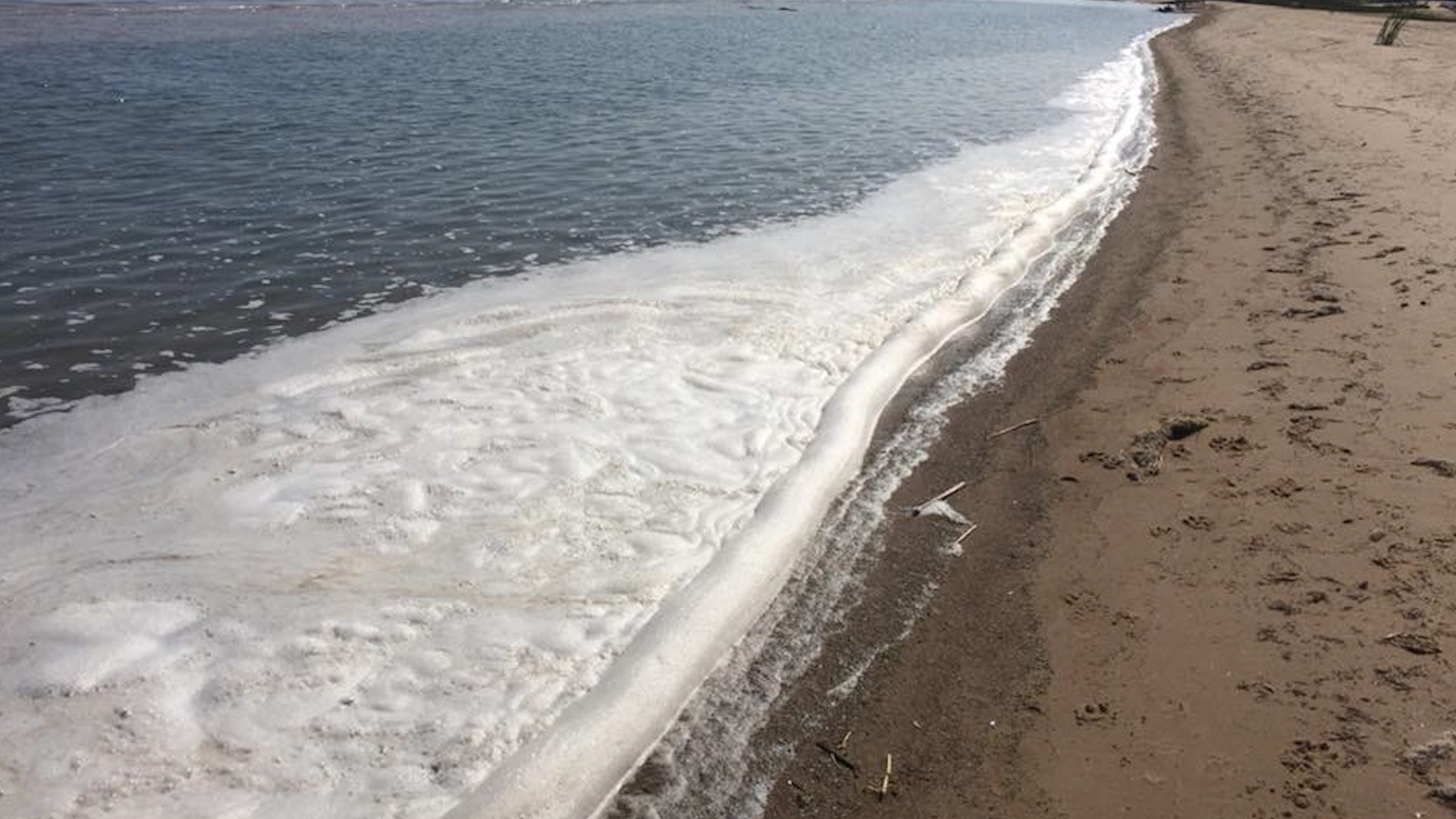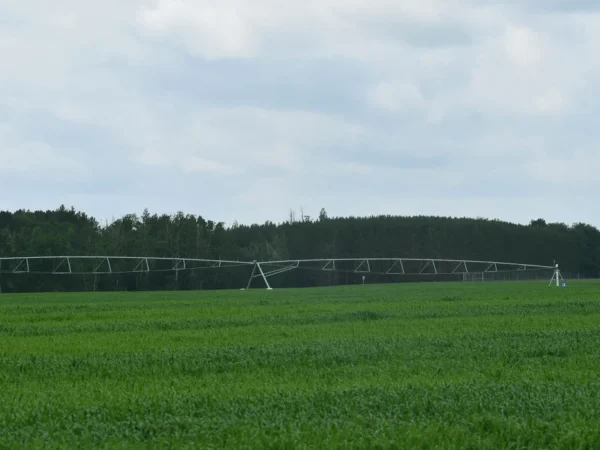
By Kelly House, Bridge Michigan
The Great Lakes News Collaborative includes Bridge Michigan; Circle of Blue; Great Lakes Now at Detroit Public Television; and Michigan Radio, Michigan’s NPR News Leader; who work together to bring audiences news and information about the impact of climate change, pollution, and aging infrastructure on the Great Lakes and drinking water. This independent journalism is supported by the Charles Stewart Mott Foundation. Find all the work HERE.
- Health officials: Limit meals of PFAS-contaminated rainbow smelt from lakes Michigan, Huron, Superior and three inland lakes
- Anglers are dismayed as pollution taints a popular sportfish
- PCB contamination prompts carp advisories in Livingston county
More than a decade after state regulators issued their first “do not eat” advisory for PFAS-tainted fish, the list of affected Michigan waterways keeps growing.
Michigan health officials this week urged people to limit meals of rainbow smelt caught in lakes Michigan, Huron, and three inland waterways because the fish are tainted with PFAS. They also warned against eating carp from two Livingston County lakes due to PCB contamination.
The warning in Michigan comes as scientists with the Environmental Working Group warn that fish across the country are tainted with high levels of PFAS. A study released Tuesday analyzed 500 fish tissue samples collected from 2013 to 2015, finding average PFAS levels so high that eating a single serving was like drinking a month’s worth of PFAS-laced water.
The announcement from the Michigan Department of Health and Human Services (MDHHS) follows ramped-up state testing for PFAS in the Great Lakes, after Wisconsin regulators in 2020 discovered high levels of the “forever chemical” in Lake Superior smelt.
Related:
- Small portions: Michigan puts PFAS advisory on Lake Superior rainbow smelt
- How to destroy a ‘forever chemical’ – scientists are discovering ways to eliminate PFAS, but this growing global health problem isn’t going away soon
That prompted follow-up testing in Michigan two years ago, and an advisory for people to eat no more than one meal per month of the sardine-sized fish. A serving is about 8 ounces for an 180-pound adult, and 2 or 4 ounces for children.
Subsequent testing in Lake Huron resulted in a consumption advisory there that’s even more strict than the one in Lake Superior. Health officials warn against eating more than six servings of rainbow smelt yearly from Lake Huron. The advisory is not enforceable, but those who ignore it face greater health risks from a class of chemicals that are linked to thyroid problems, developmental issues, hormone and immunity challenges, fertility issues and cancer.
In other waterways, the following limitations apply:
- Lake Michigan: 1 serving per month of smelt
- Portage Lake (Houghton County): 1 serving per month of smelt
- Gull Lake (Kalamazoo County): 2 servings per month of smelt
- Higgins Lake (Roscommon County): 4 servings per month of smelt
The culprit in each case is PFOS, or perfluorooctanesulfonic acid, a PFAS compound that was once a key component in Scotchgard and other stain and water repellents.
The chemicals don’t break down readily in the environment, and are now so pervasive, they show up in the rainwater in Antarctica and in virtually everyone’s blood. Fish that spend their lives in PFAS contaminated waterways also absorb the compounds, though scientists are still working to understand how PFAS moves through the food chain.
Nick Green, communications director for the Michigan United Conservation Clubs, expressed dismay about the new contamination threat. Smelt is a popular target for ice fishers, he said, and “I could see where (PFAS contamination levels) would discourage folks from getting out on the ice.”
Rainbow smelt were first stocked in Crystal Lake in 1912 as food for salmon. They made their way to Lake Michigan and spread through the Great Lakes.
Higgins Lake is one of the state’s most popular smelt fisheries. In the winter, anglers targeting smelt are a huge portion of Dave Jackson’s business at the Sports Barn, a bait-and-tackle shop near the lake.
Jackson said for now, he’s not too worried about his business.
“You’d have to be one heck of a fisherman to be eating four servings a month,” he said.
But Jackson said he’s disturbed and baffled by how the fish became so contaminated. Higgins is a springfed lake with little to no industry along its shores.
“It just doesn’t make sense,” Jackson said.
While unfortunate, MUCC’s Green said the new PFAS revelations are not surprising: “Michigan’s looking for it,” he said, “so it’s going to pop up more.”
Green anticipated the list of affected species and waterways will only grow. Now, he said, it’s imperative to identify the parties responsible for the contamination, and hold them accountable.
So far, MDHHS spokesperson Lynn Sutfin said, smelt is the only Great Lakes fish with a PFAS advisory in effect.
“We do not know why smelt seem to accumulate PFAS in higher concentrations than other species,” Sutfin said.
Sutfin said state officials collected lake herring from Lake Superior for testing in 2021, but MDHHS is still awaiting some test results for those fish.
The new PFAS advisories join many others in waterways across the state, as industrial contaminants from mercury to polychlorinated biphenyls (PCBs) taint Michigan’s fish. In addition to the smelt advisories announced this week, health officials added two new advisories for carp tainted with PCBs. Those advisories are:
- Do not eat carp from Thompson Lake in Howell.
- Don’t eat carp from Earl Lake, just to the east of Howell, if you are under age 15, have health problems such as cancer or diabetes, or are pregnant, breastfeeding or might have children in the next several years. If you don’t fall into one of those categories, you should eat no more than two servings a year.
The spate of new advisories comes as scientists search for answers to key questions about where PFAS contaminated fish and wildlife, how the chemicals spread through the environment, and what that does to the species that live in a tainted waterway.
There’s reason for hope amid the growing concern: Recent data from the Huron River, where heavy PFAS contamination has prompted widespread fish consumption advisories, indicates that contamination can subside once nearby industries stop releasing so much PFAS into waterways.
While that research is ongoing, scientists continue to uncover new sources of contamination. One example: Research published last month traced PFAS contamination in Lake Michigan’s Green Bay back to Tyco Fire Products, a firefighting foam factory in Marinette, Wisconsin.
The growing awareness about the causes and consequences of PFAS in the country’s waterways requires action by regulators, said Scott Faber, the Environmental Working Group’s senior vice president for government affairs.
“The EPA needs to move swiftly to set regulations for the industries most likely to be dumping PFAS into the environment,” Faber said in a statement. “Downstream communities especially have suffered the consequences of unregulated PFAS discharges for far too long.”
Catch more news at Great Lakes Now:
Featured image: PFAS foam on a beach near the decommissioned Wurtsmith Air Force Base in Iosco County, Mich. (Great Lakes Now Episode 1025)




